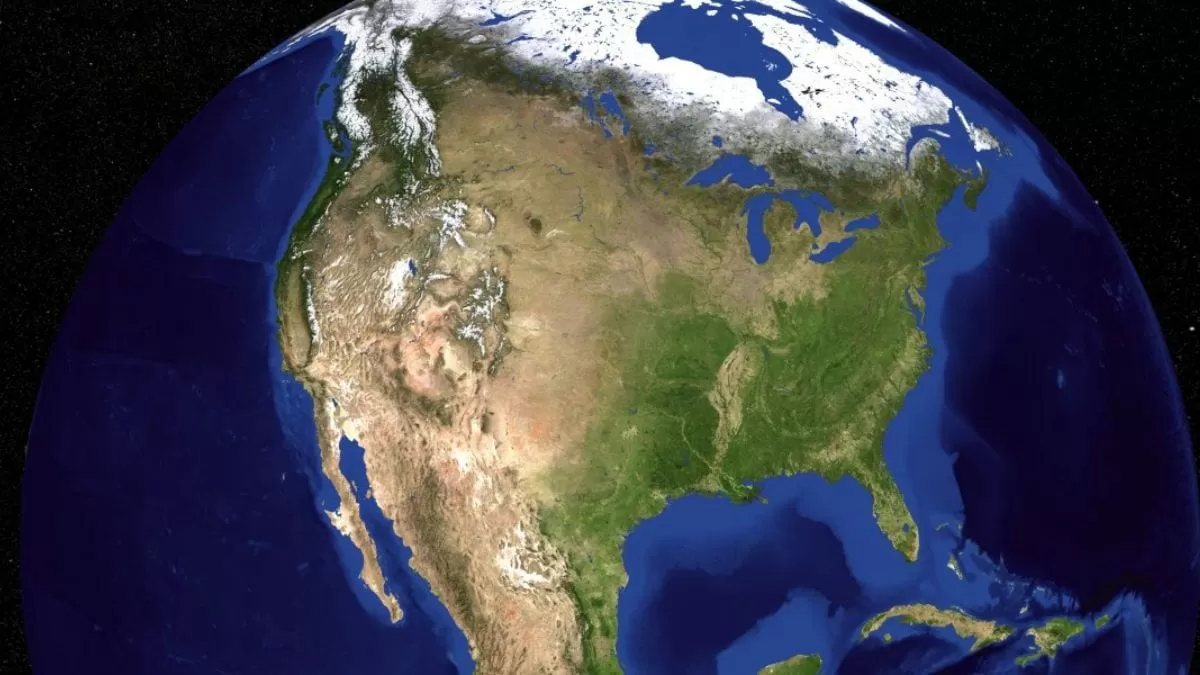A recent discovery by a group of researchers has shed new light on the geological processes taking place deep beneath the surface of the Earth. A tectonic slab, buried 660km beneath the central United States, has been identified as the source of a unique phenomenon – the thinning of the Earth’s crust over a large region. This groundbreaking finding has the potential to reshape our understanding of the Earth’s crust and the forces that shape it.
The tectonic slab in question is a remnant of the Farallon plate, an ancient oceanic plate that existed millions of years ago. As the Farallon plate subducted beneath the North American plate, it left behind a slab that has been slowly descending into the Earth’s mantle. This downward movement has been causing the Earth’s crust to thin, creating a significant impact on the surface.
Through the use of advanced seismic imaging and simulations, researchers have been able to map the movement of this tectonic slab and trace its effects on the surface. The result is a clearer understanding of how this underground movement is shaping the Earth’s crust in the Midwest and beyond.
One of the lead researchers, Dr. Sarah Johnson, explains the significance of this discovery, “We have long known that tectonic plates play a major role in shaping our planet. However, this particular tectonic slab buried deep beneath the central US has been largely overlooked. The fact that it is actively pulling down surface materials and causing the Earth’s crust to thin is a major revelation.”
The thinning of the Earth’s crust is a gradual process and is not visible to the naked eye. However, it has significant implications for the region. As the Earth’s crust thins, it creates space for the underlying mantle to rise, causing the land to slowly sink. This process, known as subsidence, can have an impact on infrastructure, such as roads and buildings, and can also affect the flow of groundwater.
One of the most significant findings from this study is that the effects of this underground movement extend beyond the Midwest. The simulations conducted by researchers show that the thinning of the Earth’s crust also occurs in other regions, such as the Great Plains and the Rocky Mountains. This suggests that the influence of this tectonic slab is widespread and has a more significant impact on the Earth’s crust than previously thought.
The discovery of this underground tectonic slab has opened up new avenues for research and could lead to a better understanding of the forces shaping the Earth’s crust. Dr. Johnson states, “We are just scratching the surface of this discovery. There is still so much to learn about the movement of this tectonic slab and its effects on the Earth’s crust. This could have significant implications for our understanding of plate tectonics and the Earth’s geological history.”
The implications of this discovery are not limited to the scientific community. This newfound knowledge could also have practical applications in industries such as oil and gas exploration. By understanding the forces at play beneath the surface, companies could better predict the location of natural resources and make more informed decisions.
The discovery of this tectonic slab highlights the importance of continued scientific research and the need to constantly question and reevaluate our understanding of the world around us. As Dr. Johnson says, “It is a reminder that there is still so much we have yet to discover about our planet and the dynamic processes that shape it.”
In conclusion, the identification of a tectonic slab buried beneath the central US, actively pulling surface materials downwards, has provided a fascinating insight into the inner workings of the Earth. This discovery expands our understanding of the forces at play in the Earth’s crust and has the potential to impact a wide range of industries. With further research, we can continue to unlock the mysteries of our planet and gain a deeper understanding of its complex geological processes.

